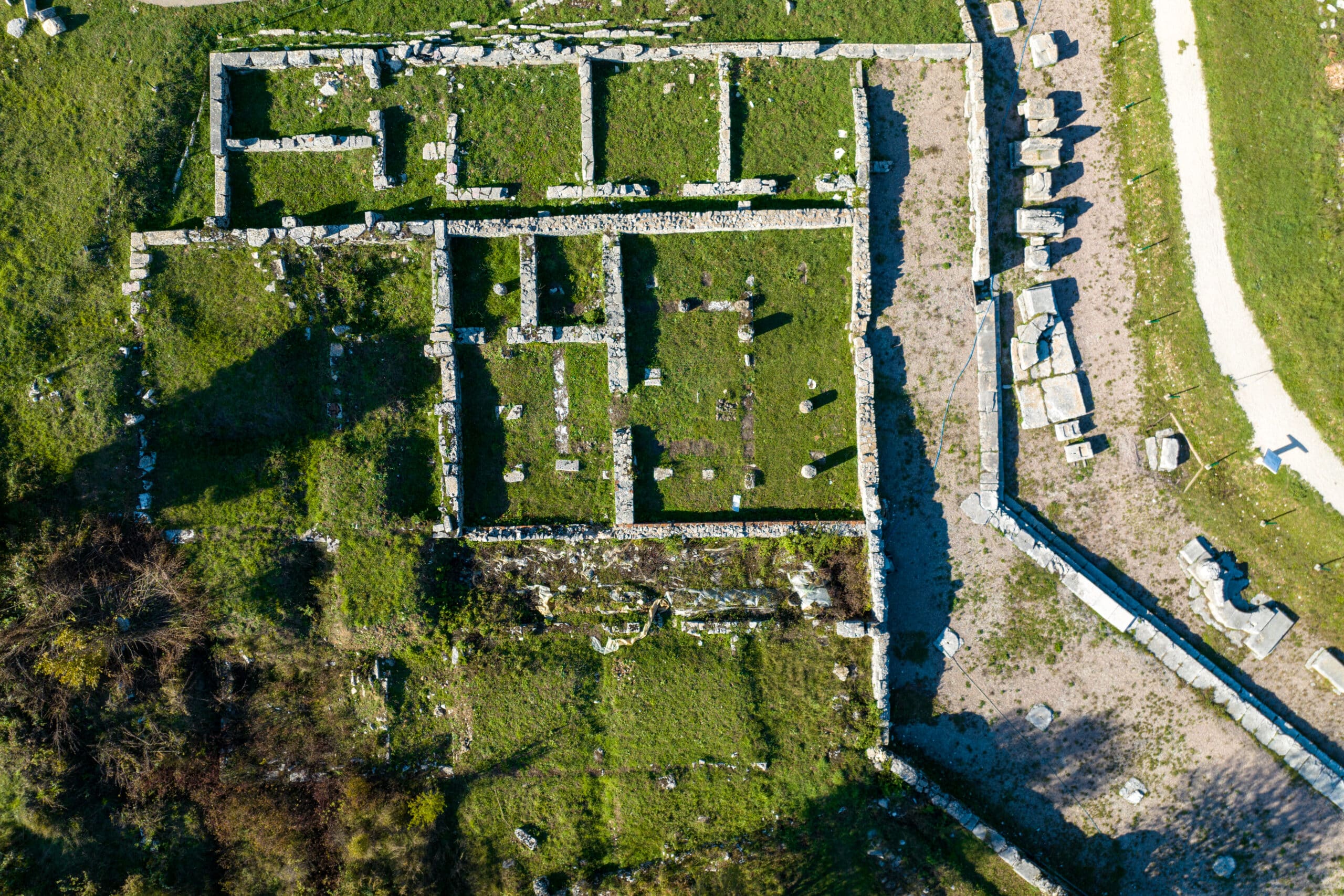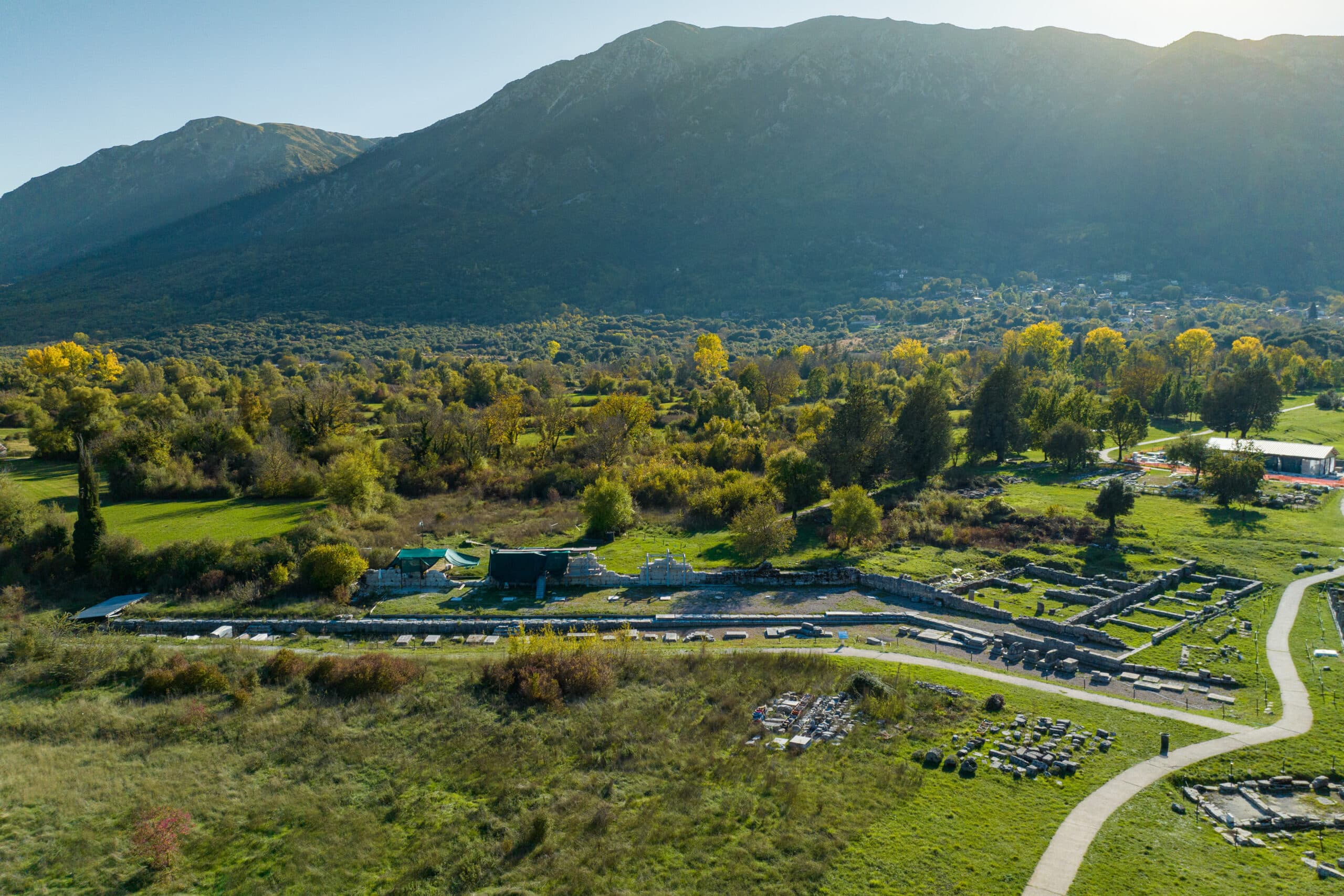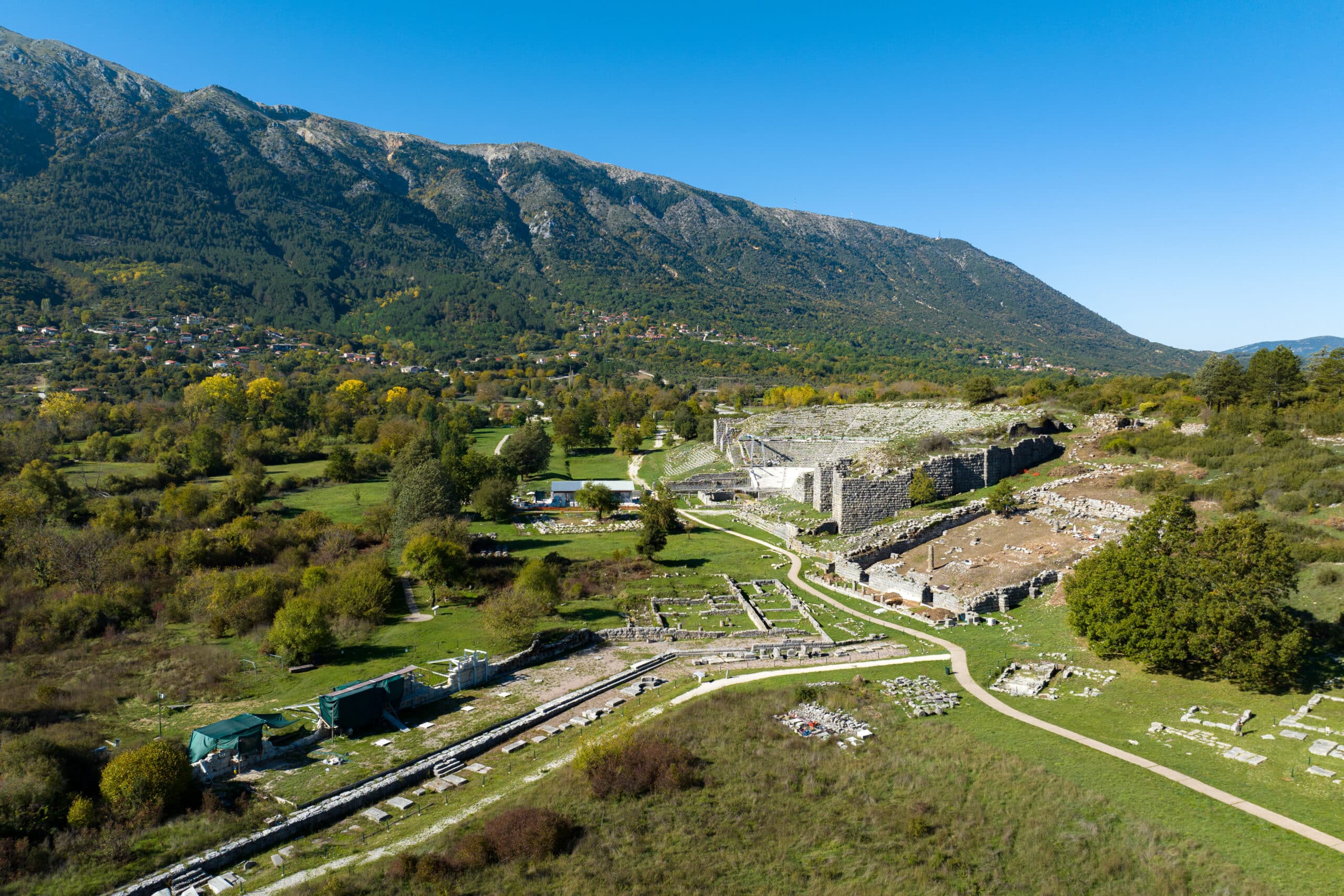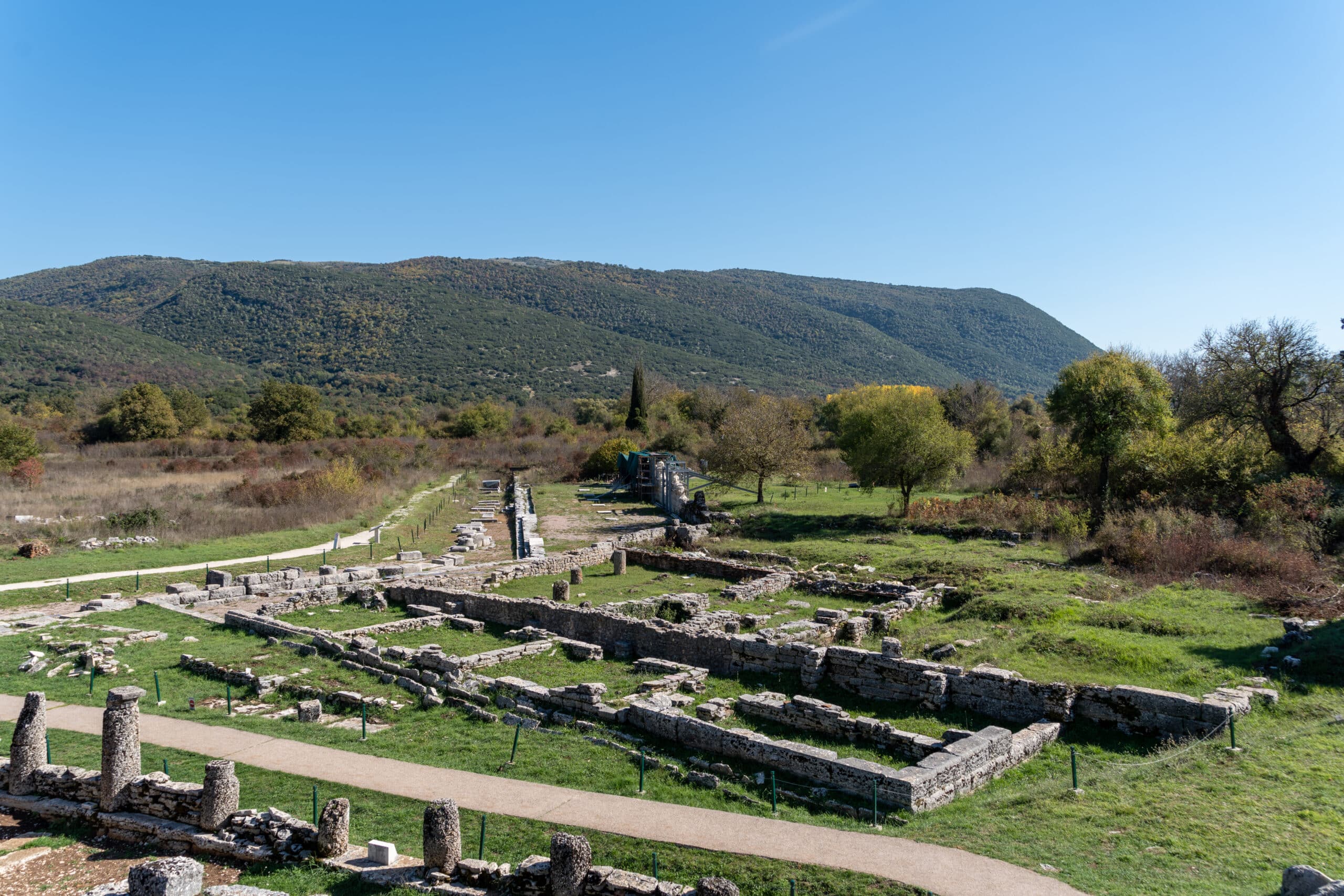
4. PRYTANEION
Nowhere is the political aspect of Dodona more pronounced than in the construction of buildings such as the Bouleuterion and the Prytaneion.
The Prytaneion was the seat of executive power, but it also had religious-political connotations. From here, the prostates, the grammateus and various other eponymous archons of the Epirotes oversaw the implementation of the decisions enacted by the assemblies. The Prytaneion also hosted the sacred hearth of the Epirotes, the centre of their political life.
It was erected in the period between the late 4th and the early 3rd c. B.C. It encompassed a chamber within which a sacred flame was kept perpetually lit together with a peristyle (colonnaded) courtyard and an altar. By the late 3rd c. B.C. it had expanded into a complex of structures, including, in all likelihood, spaces for archives and a mint. The side wings of the structure hosted andrones, chambers where eponymous archons and prominent citizens were given xenia, in other words room and board.
The bases of bronze statues inscribed with particularly important decrees for the history of ancient Epirus stand in front of the Prytaneion.
The Romans sacked the place in 167 B.C., and any activity after that was restricted to the initial structures.













